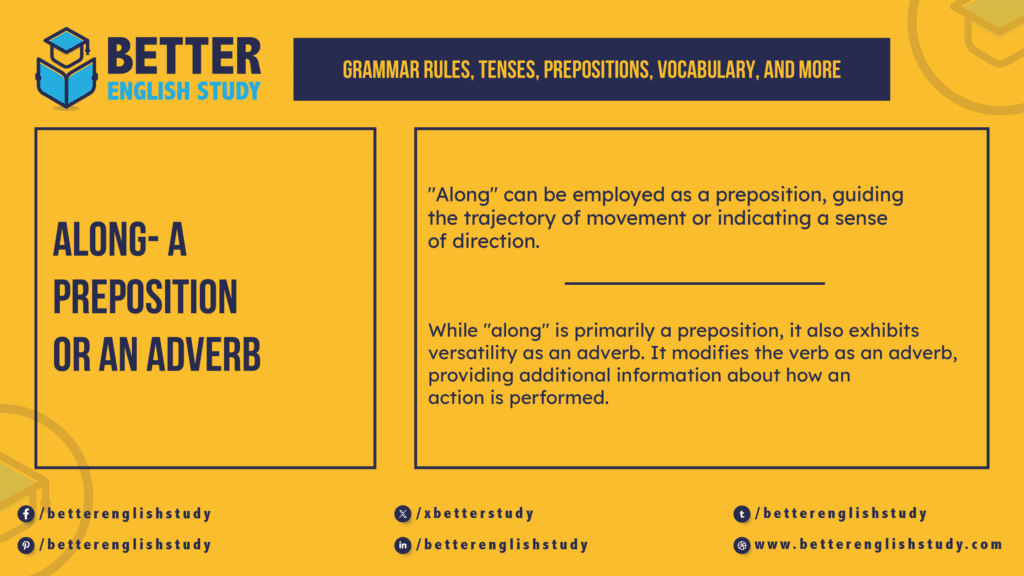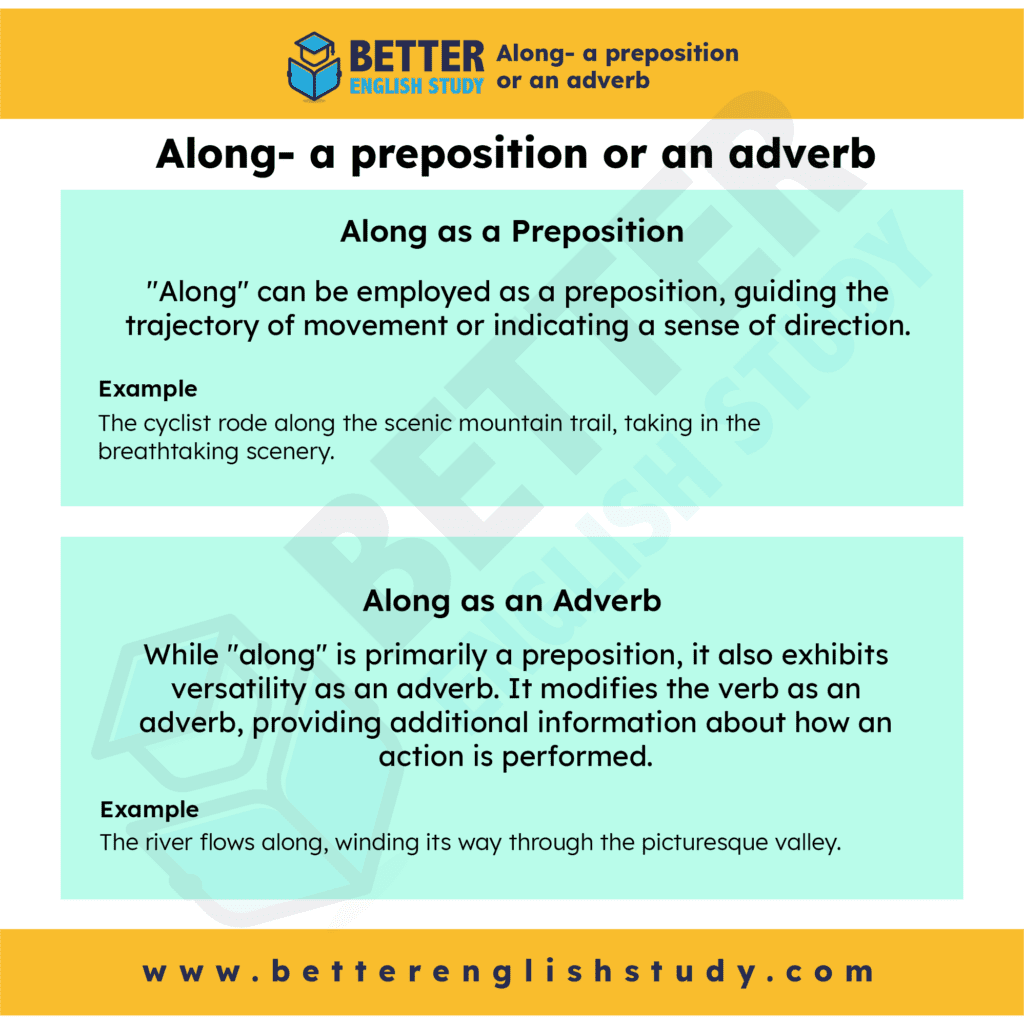
In English grammar, words often wear multiple hats, assuming different roles depending on their context. “Along” is one such word that can be both a preposition and an adverb, adding an intriguing layer of versatility to its usage.
In this article, we will unravel the dual nature of “along,” shedding light on its roles as a preposition and an adverb to empower English learners with a nuanced understanding.
Is Along a Preposition?
Yes, “along” is, indeed, a preposition. A preposition, in the realm of grammar, is a word that indicates relationships, typically expressing movement, direction, or position.
“Along” seamlessly fits into this category, guiding the intricate dance of words within a sentence. So, we can identify “along” as the preposition of movement and direction.
Along or Alongside
“Along” is often used interchangeably with “alongside,” but it’s essential to note that “along” is distinctively a preposition.
Both words convey a sense of moving beside something, but “alongside” emphasizes the parallel nature more explicitly, while “along” subtly hints at direction and movement.
Example:
- They walked along the riverbank, enjoying the view of the water.
- They walked alongside the riverbank, hand in hand, savoring the tranquility.
In the first example, “along” suggests the direction of their walk parallel to the river. In the second example, “alongside” emphasizes the close and parallel proximity of their walk by the river.
Along as a Preposition
“Along” can be employed as a preposition, guiding the trajectory of movement or indicating a sense of direction.
Example as a Preposition:
- The cyclist rode along the scenic mountain trail, taking in the breathtaking scenery.
In this example, “along the scenic mountain trail” illustrates the direction of the cyclist’s ride, emphasizing the path they followed.

Along as an Adverb
While “along” is primarily a preposition, it also exhibits versatility as an adverb. It modifies the verb as an adverb, providing additional information about how an action is performed.
Example as an Adverb:
- The river flows along, winding its way through the picturesque valley.
In this instance, “along” modifies the verb “flows,” describing the continuous and meandering movement of the river.
In conclusion, “along” stands as a dynamic word that effortlessly dons the hats of both a preposition and an adverb. When used as a preposition, it guides us along paths, hinting at movement and direction.
Whether it’s strolling along the riverbank or the river flowing along its course, “along” adds depth to our expressions.
So, the next time you navigate the linguistic landscape, remember that “along” is not just a bystander but a reliable guide, leading the way with finesse and purpose.
